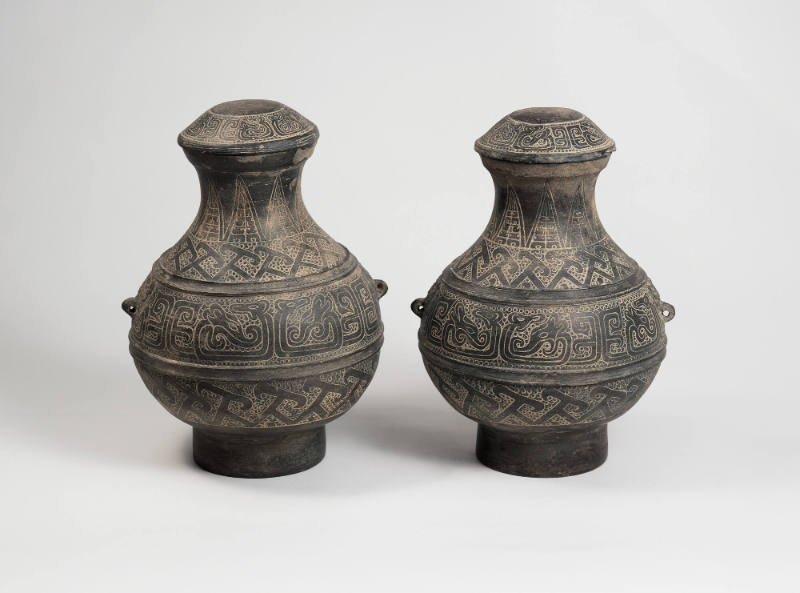


Object Details
Culture
Maya (Guatemala)
Early Classic
Date
AD 300-600
Medium
Earthenware
Dimensions
7 3/16 × 13 3/4 inches (18.3 × 35 cm)
Credit Line
Gift of Thomas Carroll, PhD 1951
Object
Number
2006.070.422
BRIEF DESCRIPTIONThis is a Maya shallow ceramic bowl with painted polychrome designs both inside and(…)
BRIEF DESCRIPTIONThis is a Maya shallow ceramic bowl with painted polychrome designs both inside and out. Originally it would have had a large flattened-conical lid with a thick handle in the middle.WHERE WAS IT MADE?This Mayan bowl was made in what is now Guatemala.HOW WAS IT MADE?This bowl was likely hand-built with the coil method. In this method, a base is made by shaping clay into a flat disc. Then hand formed coils of clay, like ropes, are successively added to one another, building up the walls of the bowl. A tool such as a wooden paddle is used to smooth the sides both inside and out, leaving no trace of the coils. Before the bowl was fired in an earthen pit, it was painted with slip. Unlike resin-based paints applied after firing, which wash off if scrubbed and burn off when heated, slip-painted decoration is relatively resistant to ordinary wear and tear. Slip paint is made by mixing different-colored clays or ground mineral pigments with water. Although some colors are naturally present in the clay, others can be made by adding powdered minerals to clay; for example, minerals high in iron produce rich oranges and reds, while those containing various forms of copper produce blues and greens.HOW WAS IT USED?Shallow bowls like this one were used in major banquets, in which lords entertained each other, especially if one was a visiting dignitary. This would explain the wear on the inside bottom of the bowl. These bowls would have contained tamales covered with sauce, much as are found in Mexican cuisine today; the (missing) lid would have kept them warm. At the conclusion of the banquet, the honored guest would be presented with the vessel as a keepsake. His heirs could then have it placed in his tomb upon his death, as a mark of his importance in life. Unfortunately, this bowl, in common with most other bowls, has no hieroglyphic writing to identify the personages involved.WHY DOES IT LOOK LIKE THIS?Look at the dancing figure in the interior. He is wearing a large feathered backrack and is shown in profile. He appears to have an angular face, with prominent hooked nose and protruding chin (the fine black lines delineating his features and other details of the image have been worn away by use). This face is characteristic of old gods in the Maya pantheon, often in charge of the underworld. He holds out his hand, which almost touches the left part of the circle border, from which comes an orange serpent. He has a somewhat protruding belly, below which his belt and loincloth are attached. He has short, flexed legs that terminate in feet firmly placed in the bottom part of the circular border.ABOUT THE MAYA CULTURE:The Maya civilization was one of the premier civilizations of Mesoamerica, achieving great masterpieces of art and architecture, a sophisticated calendrical system, and a formal system of writing that has only been deciphered in the past several decades. A much more detailed view is emerging of the Mayan city-states located in the Yucatan Peninsula of Mexico, Belize, and adjacent areas of Guatemala and Honduras. Although the exact details of the Maya collapse in the 800s are still controversial, it appears that excessive warfare and violence, coupled with environmental degradation and the stress of a large population, led to demise of this once-vibrant culture. Populations crashed, with survivors of the urban centers dispersing to more rural areas.












